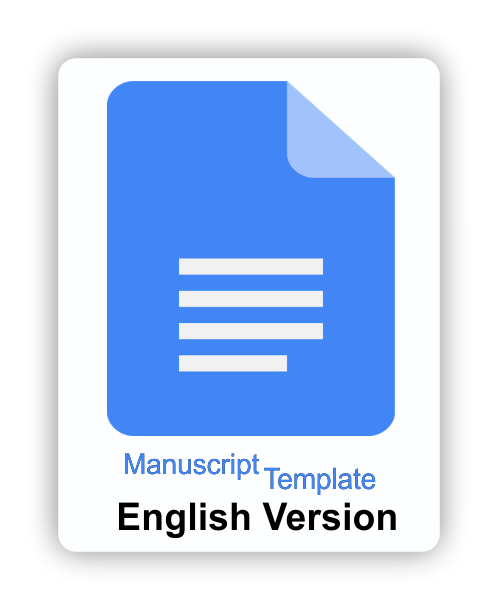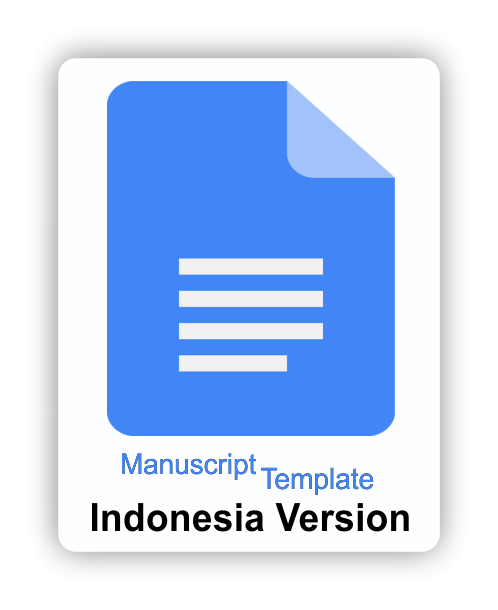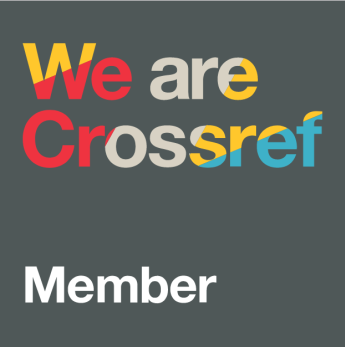Development of application of self-help skills for children with intellectual disability in a wetland environment
Downloads
The limited ability to think in children with intellectual disabilities has an impact on their understanding of danger and personal safety. Children with intellectual disabilities need to be taught to recognize and help themselves from the dangers found in the surrounding environment. The purpose of this study was to develop an application of self-help skills for children with intellectual disabilities in a wetland environment. Using the Research and Development (R&D) method within the ADDIE model (Analysis, Design, Development, Implementation, Evaluation), the study was conducted at State Special Needs School 3 in Banjarmasin. Data were collected through tests, interviews, and documentation, and analyzed both qualitatively and quantitatively. The resulting application features four main menus: self-help during floods, fires, electrical short circuits, and encounters with wild animals. Each menu includes instructional videos outlining hazards and safety procedures. The application significantly improved participants' understanding, with post-test scores (1.480) surpassing pre-test results (1.130). Further research is recommended to evaluate the effectiveness of the application in fostering independence among children with intellectual disabilities.
Anggraini, I., & Marlina. (2018). Peningkatkan keterampilan bina diri melalui teknik shaping pada siswa tunagrahita ringan. Jurnal Penelitian Pendidikan Kebutuhan Khusus, 6(1), 186-191.
Annisa, E., Fajar, M. D. A., Salwa, N. M., KZ, M. P., Cahyani, W. N., & Kornellia, E. (2021). Analisis kondisi individu dan lingkungannya di pemukiman lahan basah pada delapan kota/kabupaten berbeda. Hasanuddin Journal of Public Health, 2(3), 281–296. https://doi.org/10.30597/hjph.v2i3.13716
Aziz, A., & Murtadlo (2018). Pengaruh video animasi terhadap kemampuan bina diri anak tunagrahita ringan pada pembelajaran bina diri di SLB Tunas Kasih Surabaya. Jurnal Pendidikan Khusus, 10(2), 1-21. https://ejournal.unesa.ac.id/index.php/jurnal-pendidikan-khusus/article/view/23731
Barokati, N., & Annas, F. (2013). Pengembangan pembelajaran berbasis blended learning pada mata kuliah pemrograman komputer (studi kasus: UNISDA Lamongan). Sisfo, 4(5), 352–359. https://doi.org/10.24089/J.SISFO.2013.09.006
Boot, F. H., Dinsmore, J., Khasnabis, C., & MacLachlan, M. (2017). Intellectual disability and assistive technology: Opening the GATE Wider. Frontiers in Public Health, 22(5), 1-4. https://doi.org/10.3389/fpubh.2017.00010
Bouck, E. C., Norwine, L., Jakubow, L., Long, H. M., & Nuse, J. (2025). Bon appétit: Acquiring food preparation skills via virtual simulation. Education and Training in Autism and Developmental Disabilities, 60(1), 86–99.
https://doi.org/10.1177/215416472506000107
Bridges, S. A., Robinson, O. P., Stewart, E. W., Kwon, D., & Mutua, K. (2020). Augmented reality: Teaching daily living skills to adults with intellectual disabilities. Journal of Special Education Technology, 35(1), 3–14. https://doi.org/10.1177/0162643419836411
Campbell, D. (2019). Wetlands. In Encyclopedia of the World’s Biomes: Volumes 1-5 (Vols. 1–5, pp. V4-99-V4-113). Elsevier. https://doi.org/10.1016/B978-0-12-409548-9.11810-X
Damastuti, E. (2020). Pendidikan anak dengan hambatan intelektual. Program Studi Pendidikan Luar Biasa FKIP Universitas Lambung Mangkurat.
Damastuti, E. (2023). Pengembangan program khusus bina diri anak dengan hambatan intelektual. Komojoyo Press.
Deasy, A., Puji, H. K., & Nugroho, P. H. P. (2023). Disaster-resilient villages: strengthening community capacity in flood disasters managing in wetland areas. Disaster Advances, 16(4), 1–7. https://doi.org/10.25303/1604da01007
Dekelver, J., Kultsova, M., Shabalina, O., Borblik, J., Pidoprigora, A., & Romanenko, R. (2015). Design of mobile applications for people with intellectual disabilities. Communications in Computer and Information Science, 535, 823–836. https://doi.org/10.1007/978-3-319-23766-4_65
del Barrio, V. (2004). Diagnostic and statistical manual of mental disorders. Encyclopedia of Applied Psychology, 607-614. https://doi.org/10.1016/B0-12-657410-3/00457-8
Downs, J., Keeley, J., Skoss, R., Mills, J., Nevill, T., Schippers, A., Lindly, O., & Thompson, S. (2024). Perspectives on the essential skills of healthcare decision making in children and adolescents with intellectual disability. International Journal for Equity in Health, 23(119), 1-9. https://doi.org/10.1186/s12939-024-02204-5
Eltantawy, M. M. (2023). The effectiveness of a training program based on selfmanagement skills in developing independent behavior and safety and security skills of children with intellectual disability. Journal of Intellectual Disability - Diagnosis and Treatment, 11(2), 97–108. https://doi.org/10.6000/2292-2598.2023.11.02.4
Fitriyani, A., Lubis, H., & Achmad, A. (2023). Media Pembelajaran bina diri anak tunagrahita SDLB Negeri Bekasi Jaya berbasis Android. JSI (Jurnal Sistem Informasi), 10(1), 47-58. https://doi.org/10.35968/jsi.v10i1.986
Harahap, F. R. (2016). Pengelolaan lahan basah terkait semakin maraknya kebakaran dengan pendekatan adaptasi yang didasarkan pada konvensi ramsar. Society, 4(2), 38–47. https://doi.org/10.33019/society.v4i2.28
Hasyim, A. N., Cahyaningtyas, D. P., Iriansyah, Y., Azahra, D. N., Kolayniskov, N., & Lusiana, R. (2023). Pengembangan personal safety skill anak tunagrahita di SLB Nur Husnina melalui training attention, comprehension and creativity. Journal of Community Dedication, 3(4), 309–315. https://adisampublisher.org/index.php/pkm/article/view/539
Ilmi, B., Nasrudin, N., Kumalawati, R., & Riadi, S. (2022). Penanganan banjir pada permukiman padat penduduk Sepanjang Sub DAS Martapura Kabupaten Banjar Provinsi Kalimantan Selatan. Jurnal Geografika (Geografi Lingkungan Lahan Basah), 3(2), 92-101. https://doi.org/10.20527/jgp.v3i2.6917
Isrona, L., Mardhotillah, F., Husna, N., Fauzan, M., Mujahidah, I., Helery, R., Yetti, H., & Indah, R. (2021). “Monster VIPs”: disaster preparedness training for children with intellectual disabilities. In L. Comfort, S. Saravanan, I. W.
Sengara, & F. null (Eds.), E3S Web of Conferences (Vol. 331). EDP Sciences. https://doi.org/10.1051/e3sconf/202133104008
Kamlun, K. U., & Phua, M.-H. (2024). Anthropogenic influences on deforestation of a peat swamp forest in Northern Borneo using remote sensing and GIS. Forest Systems, 33(1), 1-7. https://doi.org/10.5424/fs/2024331-20585
Kang, Y. S., & Chang, Y. J. (2020). Using an augmented reality game to teach three junior high school students with intellectual disabilities to improve ATM use. Journal of Applied Research in Intellectual Disabilities, 33(3), 409–419. https://doi.org/10.1111/jar.12683
King, E., Okodogbe, T., Burke, E., McCarron, M., McCallion, P., & O’Donovan, M. A. (2017). Activities of daily living and transition to community living for adults with intellectual disabilities. Scandinavian Journal of Occupational Therapy, 24(5), 357–365. https://doi.org/10.1080/11038128.2016.1227369
Kusnawan, A., Muslimah, S. R., & Amalia, A. (2022). Latihan bina diri pada siswa tunagrahita dalam meningkatkan kemandirian. CONS-IEDU, 2(1), 7-15 https://jurnal.iuqibogor.ac.id/index.php/cons-iedu/article/view/371
Kwon, J. (2009). Diagnostic evaluation and rehabilitation in children with intellectual disabilities. Journal of the Korean Medical Association, 52(6), 601–610. https://doi.org/10.5124/jkma.2009.52.6.601
Lancioni, G. E., Singh, N. N., O’Reilly, M. F., & Sigafoos, J. (2024). Possible assistive technology solutions for people with moderate to severe/profound intellectual and multiple disabilities: considerations on their function and long-term role. International Journal of Developmental Disabilities, 0(0), 1-7. https://doi.org/10.1080/20473869.2024.2303532
Mas’Ula, N., Siartha, I. P., & Citra, I. P. A. (2019). Kesiapsiagaan masyarakat terhadap bencana banjir di Desa Pancasari Kecamatan Sukasada Kabupaten Buleleng. Jurnal Pendidikan Geografi Undiksha, 7(3), 103-112. https://doi.org/https://doi.org/10.23887/jjpg.v7i3.21508
Meesupmun, S., Mitranun, C., & Sriwanyong, S. (2022). Health-and-safety-promotion program development for children with intellectual disabilities in inclusive classroom. Kasetsart Journal of Social Sciences, 43(4), 805–814. https://doi.org/10.34044/j.kjss.2022.43.4.02
Mumpuniarti, Phytanza, D. T. P., Praptiningrum, N., & Sukinah. (2023). Teacher’s understanding of domestic activity daily living for children with intellectual disabilities. Pegem Egitim ve Ogretim Dergisi, 13(2), 215–222. https://doi.org/10.47750/pegegog.13.02.26
Nurhuda, G. A., Sunarjo, L., Fatmasari, D., & Ayun, Q. (2024). Aprils mophie model improves toothbrushing skills of intellectual disabilities children: Is it effective. JKG: Jurnal Kesehatan Gigi, 11(1) 33–40. https://doi.org/10.31983/jkg.v11i1.10218
Park, E. Y. (2022). Meta-analysis on the safety skill training of individuals with intellectual disabilities. International Journal of Disability, Development and Education, 69(4), 1457–1471. https://doi.org/10.1080/1034912X.2020.1761540
Prastitasari, H., Annisa, M., Sari, R., Prasetyo, A. R., Jannah, F., & Habibi, H. (2022). Pelatihan pengembangan perangkat pembelajaran berbasis pendekatan kontekstual lahan basah bagi guru SD Negeri Pemurus 2 Kabupaten Banjar Kalimantan Selatan. Elementary School Journal PGSD FIP UNIMED, 11(3), 266-274.
https://doi.org/10.24114/esjpgsd.v11i3.26938
Rachman, A., Sari, D. D., & Widya Rini, T. P. (2022). Pengembangan pop up book ekosistem lahan basah untuk siswa sekolah dasar. ELSE (Elementary School Education Journal) : Jurnal Pendidikan dan Pembelajaran Sekolah Dasar, 6(1), 227-242. https://doi.org/10.30651/else.v6i1.12175
Raharjo, R. C., & Sudarto, Z. (2016). Model pembelajaran langsung terhadap kemampuan bina diri siswa tunagrahita ringan. Jurnal Pendidikan Khusus, 8(1), 1–10. https://ejournal.unesa.ac.id/index.php/jurnal-pendidikan-khusus/article/view/15949
Riyadi, S., Dwi Sari, R., Veriza, E., Wahyuni, S. (2020). Perbedaan perilaku menyikat gigi sebelum dan sesudah penyuluhan dengan metode video untuk meningkatkan pembelajaran bina diri anak tunagrahita SLB N 1 Kota Jambi Tahun 2019. Jurnal Bahana Kesehatan Masyarakat (Bahana of Journal Public Health, 4(2), 74-79. https://doi.org/10.35910/jbkm.v4i2.287
Sarcco, P. A. L., Zegarra, P. F. D., & Sulla-Torres, J. A. (2023). Mobile app for the learning of children with intellectual disabilities. In H. Cardona-Reyes & M. A. Ortiz-Esparza (Eds.), CEUR Workshop Proceedings (Vol. 3693, pp. 130–140). CEUR-WS. https://ceur-ws.org/Vol-3693/paper3.pdf
Sompa, A. T., Setyasyuti, Y., Daryanto, Y., Damara, A. P. A., Kariada, I. G., Ilhamuddin, Yuliana, L., Ulfah, M., Jannah, R., & Andriani, R. (2021). Sosialisasi tangguh bencana banjir Di Desa Sungai Tabuk, Kecamatan Simpang Empat, Kabupaten Banjar, Provinsi Kalimantan Selatan. Journal Empowerment and Community Service, 1(1), 31-35. https://doi.org/10.53622/jecsr.v1i01.66
Stierle, J., Ryan, J. B., Katsiyannis, A., Mims, P., Carlson, A., & Allen, A. (2023). Using smart phone technology to improve daily living skills for individuals with intellectual disabilities. Journal of Applied Research in Intellectual Disabilities, 36(5), 1169–1178. https://doi.org/10.1111/jar.13139
Sulistyaningrum, N. D., Mumpuniarti, M., & Nurkhamid, N. (2021). Development of activity of daily living modules based on behavioral approaches for moderate intellectual disability. Jurnal Prima Edukasia, 9(1), 1-15. https://doi.org/10.21831/jpe.v9i1.32857
Yutikasari, D. U., & Azizah, N. (2019). Safety skills of students with mild intellectual disability. Advances in Social Science, Education and Humanities Research, 296, pp. 68-72. https://doi.org/10.2991/icsie-18.2019.13
Copyright (c) 2025 Eviani Damastuti, Imam Yuwono, Utomo Utomo, Siti Jaleha, Rona Wulandari, Dewi Rizka Adelia, Siti Nur Sabah

This work is licensed under a Creative Commons Attribution-ShareAlike 4.0 International License.
The journal allows the author(s) to hold the copyright without restrictions. Finally, the journal allows the author(s) to retain publishing rights without restrictions
 | Jurnal Inovasi Teknologi Pendidikan by http://journal.uny.ac.id/index.php/jitp is licensed under a Creative Commons Attribution-ShareAlike 4.0 International License. |























